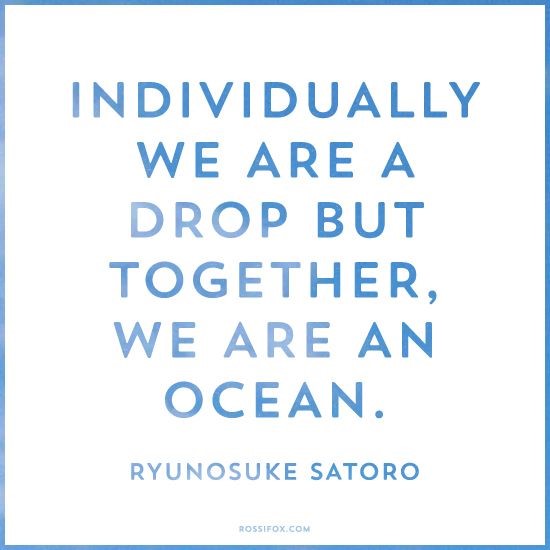The Tyranny Of Collaboration
The De-evolution of Marketing Communications, Part 1: The tyranny of collaboration.
A client gave me a sweatshirt with this phrase on it:
 Very inspiring.
Very inspiring.
At BrainyQuote, deep thinkers from Thomas Friedman to Krist Novoselic concur – all must bow at the altar of collaboration. Lin-Manuel Miranda says “working with other people makes you smarter; that’s proven.” Not sure about “proven,” but he deserves some slack for “Hamilton” (tickets gratefully accepted).
 You think collaborating on your project is tough? Try working with Jefferson!
You think collaborating on your project is tough? Try working with Jefferson!
Finally, another great genius, Alicia Silverstone, assure us – “Collaboration is awesome!”
 Me and Dionne totally worked together on this look. As if!
Me and Dionne totally worked together on this look. As if!
But hold up – there are a few dissenters: Ernest Hemingway, John Irving, Salmon Rushdie, Jeffrey Eugenides … all say their best work is created alone.
What do they have in common? They’re writers. They know writing is a solo act. Well, Andre Gide says it’s a collaboration with God, but that’s a pretty high standard.
 Ah, thanks dude, but I’d rather just write it myself.
Ah, thanks dude, but I’d rather just write it myself.
Now, these guys write great literature, and I am NOT comparing it to what my daughter, with scathing condescension, refers to as “capitalist writing.” But I do assemble words in a non-random order for a living, and I agree – writing is a one-person job. Moreover:
Everyone used to know this.
In those halcyon days, advertising creative teams presented their work to the client. Then, within strict and aggressively enforced parameters, clients were entitled to ask questions – the bold ones might sheepishly inquire “did you think about doing it this way instead?” The writer or AD would dismissively roll their eyes, prompting a younger and perhaps less dashing version of Roger Sterling to jump in and say, “let’s leave the creative work to the creative people, shall we? Hey, who wants a three martini lunch?”
 The sacrifices I make to protect your precious copy, Don …
The sacrifices I make to protect your precious copy, Don …
OK, that wasn’t ideal either – clients, account people, research folks and others can all contribute to the creative process.
But the pendulum has swung too far in the other direction. These days, I may never even see the final copy. By the time the work is produced, it has been stepped on so many times that any semblance of rhythm, of story, of life is long gone.
Thankfully, most of my clients are not like this. But it’s common to collaborate on copy today, which is great for bonding and kumbaya moments, but wreaks havoc on the effectiveness of the messaging.
Here’s an example – a mission statement (I think):
The digital world promises consumers a better, more connected life, and we’re the ones delivering it. We make it possible for people to stay in touch and businesses to connect with their customers. We’re also bringing technology and hands-on learning opportunities directly to kids who need it most. Our goal is to inspire tomorrow’s creators to use technology to build brighter futures for themselves, their families and the world.
Any idea what this company does? Yeah, me either. But it’s the first thing you see if you go to the Verizon Wireless About Us section. Differentiating? Descriptive? Powerful? Inspiring? No, no, no and no. It’s not BAD, exactly, it’s just pointless.
And it’s everywhere. Whenever I see ineffective creative, I ask myself, “how could the writer let THAT happen?” Why are good writers producing such weak-ass work?
There are a few main culprits, and I am going to single out one: software. Yep, the very tools that simplify our lives have made it nearly impossible to produce our best work.
Thanks, Microsoft. (When in doubt, blame Microsoft.)
 It doesn’t fit your preferred way of working? Too bad!
It doesn’t fit your preferred way of working? Too bad!
Every professional uses tools. Doctors use stethoscopes, iron workers use welders, lawyers use big words and human frailty. But they are tools, not magic wands – you still need to supply experience, talent, skill, knowledge or some combination thereof. And back in the day of typewriters and X-acto knives (i.e., when the needed skills were hard to learn and time-consuming to execute), everyone understood that.
Then computers happened.
Computers democratized creative work. Suddenly, you didn’t need pesky things like talent or skill to make an ad or a web site. All you needed was a computer. Sure, you might not have known what you’re doing, but did that stop Donald Trump?
So, hey, congratulations, you can now do your own creative work. But should you? I can buy a scalpel and a surgical mask, but would you trust me to remove your appendix?
 C’mon, it’s a useless flap of skin … how hard can it be?
C’mon, it’s a useless flap of skin … how hard can it be?
In the old days, no-one rewrote your copy because hey, you’re the writer. Now, just click on the Review tab and “collaborate” away. Unfortunately, you’ll probably end up with diffuse, voice-less, terrible writing. That’s why professionals rarely collaborate. Sure, they solicit opinions, suggestions, ideas, direction, etc. But the actual writing part? Like I said, it’s a one person job.
I politely ask my clients what they’re trying to accomplish with a revision and let me come up with the best way to do it. I’ve been writing professionally for 30 years. It’s a skill. Not everyone is equally good at it. It’s OK – I suck at many things (partial list: gardening, home repair, keeping my mouth shut, drinking, keeping my mouth shut after drinking).
But why would an organization hire a writer, then allow an unproven, unskilled non-writer to blithely slice and dice the very output for which they just paid top dollar?
It’s like having a Pop Warner QB replace Tom Brady in the Super Bowl. Imagine how people would feel about THAT.
 It was so beautiful when you wrote it … and now look at it.
It was so beautiful when you wrote it … and now look at it.
Other threats to creative excellence: MBAs, Wall St, the web. Check back soon!